I currently have the following classes:
public class NavigationItem
{
public int ID { get; set; }
public string Title { get; set; }
public int ParentID { get; set; }
public List<NavigationItem> Children { get; set; }
}
public class FlatItem
{
public int ID { get; set; }
public string Title { get; set; }
public int ParentID { get; set; }
}
I have a sample data as follows:
+====+============+==========+
| ID | Title | ParentID |
+====+============+==========+
| 1 | Google | |
+----+------------+----------+
| 2 | Microsoft | |
+----+------------+----------+
| 3 | Oracle | |
+----+------------+----------+
| 4 | Gmail | 1 |
+----+------------+----------+
| 5 | Sheets | 1 |
+----+------------+----------+
| 6 | Adsense | 1 |
+----+------------+----------+
| 7 | Azure | 2 |
+----+------------+----------+
| 8 | SharePoint | 2 |
+----+------------+----------+
| 9 | Office | 2 |
+----+------------+----------+
| 10 | Java | 3 |
+----+------------+----------+
| 11 | Word | 9 |
+----+------------+----------+
| 12 | Excel | 9 |
+----+------------+----------+
| 13 | PowerPoint | 9 |
+----+------------+----------+
I already have the code to pull all the information from the sample data above and turn it into a List<FlatItem> object.
What's the best approach so that I can have a List<NavigationItem> object which will look like something below:
- Google
- Gmail
- Sheets
- AdSense
- Microsoft
- Azure
- SharePoint
- Office
- Word
- Excel
- PowerPoint
- Oracle
- Java
I'm thinking of creating a recursive method to loop through my List<FlatItem> then structure it in a way to be a nested list of NavigationItem.
